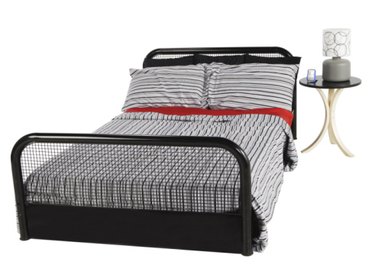
Selecting the right bedsheets can affect the quality of sleep you get. In addition to bed frame, mattress quality and firmness, and the temperature of your bedroom, the material you select for your sheets is an important factor that can mean the difference between feeling fatigued and feeling refreshed. Microfiber and flannel are two materials used frequently to manufacture bedsheets, and the two serve different purposes and fulfill different needs to ensure the best night's sleep possible.
Material
Video of the Day
Microfiber is a synthetic material most commonly made with polyamides, polyesters (such as nylon, kevlar, nomex and trogamide), or a combination of both. Microfiber is popular for its low-lint characteristic, which makes it so popular for use in cleaning products. Microfiber is also very gentle and soft to the touch. Flannel, on the other hand, is a soft, woven fabric that is traditionally made from wool, but today is made most often from cotton, wool and occasionally synthetic fibers. Flannel's softness results either from its loose weave, or from the brushing process, whereby a fine-toothed metal brush gently agitates the flannel's surface to separate some of the loose fibers. Flannel has either a single or double nap -- single where only one side is brushed, and double where both sides are brushed; double nap is more expensive. Some consumers prefer flannel because it can be manufactured from natural fibers, which cause less irritation to skin and can have a smaller environmental impact than the petroleum-based plastics that microfiber is derived from.
Video of the Day
Climate
Microfiber is very thin -- about one denier in thickness. This makes microfiber the more obvious choice for bedding in warmer weather and warmer climates. Flannel is traditionally used to make sleepwear, bedding and plaid clothing -- all designed to help endure the cold weather. Using flannel sheets in the summer will lead to some very sweaty nights. A set of microfiber sheets would be appropriate for spring and summer, while flannel is seasonally correct in the fall and winter.
Care
Because flannel is made most often from natural fibers such as cotton or wool, caring for flannel requires the same vigilance that prevents shrinking the sheets so they no longer fit the bed. Many brands of flannel sheets made from wool or cotton are sold pre-shrunk to minimize fuss when it comes to laundering and stain removal. This means the flannel sheets can be washed in warm water and tumbled dry without risk of shrinking. Because of its loose weave and brushing process, however, flannel does have more of a propensity than microfiber to pill, which is the appearance of small balls of fiber on the surface of the material. Microfiber is a lower-maintenance material. Because it is synthetic, it should be kept out of the dryer after washing, but normal detergents and a cold rinse are all that's necessary to clean microfiber sheets.
Price
Microfiber sheets are cheaper than good flannel sheets. Because it is made essentially from types of plastic, microfiber is cheap to manufacture, which keeps the cost down. This is not to say you can't find expensive, designer microfiber sheets. However, because good flannel -- that is, flannel made of wool and/or cotton -- is made using a centuries-old manufacturing process, and requires natural resources that need to be gathered and processed, it is more expensive than microfiber. To keep your costs down, choose microfiber; to stay warm and classy all winter long, go with real, brushed flannel.